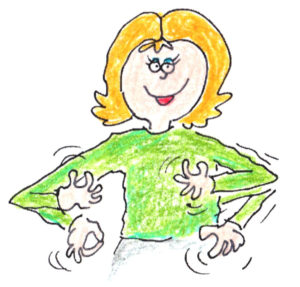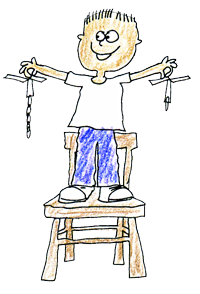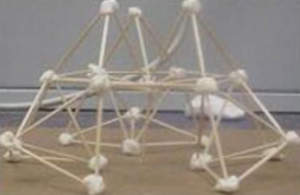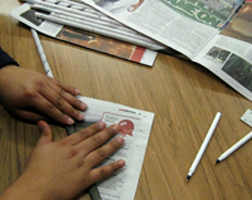Just like many earthquakes, you can model the process of building up pressure and then having it released quickly.
Snap your fingers!
The pressure between your fingers builds up and you continue adding pressure until suddenly the force overcomes the friction between your fingers and you snap!
Cut and fold paper to create a helicopter that spins as it’s dropped to the floor. Create a second helicopter but this time change the size or mass of the helicopter. It can be hard to time a helicopter as it drops so consider dropping the two helicopters to determine if the change affects how the helicopter falls to the floor. For more about this activity, check out these resources: eGFI Dream Up the Future or a FREEBIE created by Bryce Hixson. My students enjoy this activity so much I included it in my Pushes and Pulls product at TpT.
Here’s another activity to consider that requires less common materials, raw spaghetti and miniature marshmallows. You’ll want to set aside time if your students love this activity like mine do. Suggested grade level is sixth. Younger students might struggle with being patient and handling small materials. If you have younger students you might use tape instead of marshmallows to create towers. After your students complete their structures consider, if space allows, leaving them out on a shelf. As the marshmallows dry the structures remain intact. Kids love seeing their work displayed in the room! You might view this TED talk to find out why kindergarten students are better at this kind of …
Need a quick activity that requires only newspaper and tape? Maybe an activity for a family science night? www.flickr.com/photos/vinzcha/ / CC BY 2.0 Consider this online resource adapted from PBS that combines science and engineering. It includes a clearly written procedure, vocabulary, background, and suggestions for an assessment. It could be completed by teams of engineer/scientists in your classroom! My students love this activity. The site suggests 20 minutes but my students always ask for more time to try variations they’ve seen other teams attempt. That’s what scientists do right, build on each other’s work?
Teaching a unit about force? Poetry can be a great addition to your science resources. Read about ten ways to use poetry in your classroom from Reading Rockets. In addition to my list of poetry by Shel Silverstein, here are suggestions for poems you might consider sharing with your students. The Butterfly Jar, Jeff Moss force: “London Bridge” A Pizza the Size of the Sun, Jack Prelutsky buoyancy: “We Often Walk on Water” magnetism: “I’m Practically Covered with Needles and Pins” Something Big has Been Here, Jack Prelutsky force: “The Turkey Shot Out of the Oven” These could support activities …





